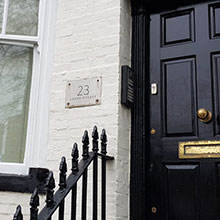
Have UK Workers Lost the Love for Lunch Breaks?
And Shouldn’t we be Taking More Time Away From Our Desks?
In a rapidly evolving working landscape the traditional lunch break is starting to feel like an endangered species, with many employees, as well as the self-employed, opting to stay at their desks throughout the course of the day. With remote and hybrid working more popular than ever, there’s less impetus to follow the crowd as throngs of office workers pour out of their buildings between 12 and 2, but is this lost love of the lunch break something we should in fact lament?
Unsurprisingly research reveals that taking a break and going for a walk during lunchtime can have a profound impact on productivity, creativity and overall job satisfaction. So why aren’t we making the most of our breaks and embracing the benefits they bring?
The Lunch Break Paradox: Productivity and Downtime
The State of the Lunch Break in 2024
It cannot be denied, the state of the lunch break is at a crossroads. The once sacred hour is frequently replaced by quick snacks in front of a computer screen. Surveys indicate a significant decline in workers taking full lunch breaks, with the UK workforce now averaging just 33 minutes per main mid work break, a majority of workers admitting they skip at least one lunch break a week entirely and as many as 10% taking no breaks whatsoever across the week!
This shift is partly attributed to the blurred lines between personal and work life that come with now commonplace remote working arrangements. The change also reflects an intense work culture in some sectors, where being perpetually busy is often glorified, or even expected in some cases. Yet, this overlooks the health risks associated with continuous work without adequate breaks, particularly for desk bound jobs.
Skipping the daily lunch break in order to get some steps in not only impacts physical health – increasing risks of weight gain and cardiovascular issues – but also mental wellbeing. Regular breaks are crucial to manage stress levels and prevent burnout, suggesting that the undervaluing of lunch breaks could have long-term consequences on employee health and productivity.

The Rise of Remote Work and Its Impact on Breaks
The ascent of remote work has redefined the structure of the traditional workday, including the approach to lunch breaks. The freedom to design one’s schedule in a home setting has led many to forgo a designated break time. Employees often feel compelled to demonstrate productivity by being available and responsive, which can mean fewer and shorter breaks.
The absence of a communal office environment also reduces the social aspect of lunch breaks, which previously encouraged workers to step away from their desks. However, this lack of separation between work and personal life just isn’t good for us as social creatures. Stress levels can remain high without the buffer that breaks provide and as pressure builds, failure to release it will ultimately impact negatively on performance.
Understanding the benefits of walking on your lunch break is essential, as it represents not only a physical detachment from work but a mental one as well, offering a much needed distance that can aid in maintaining work-life balance and overall job satisfaction, whether working from home, in an office, or somewhere else like a coworking space or coffee shop (though lets not get started on people who’ll spend an entire day in a cafe with limited space, buried behind their laptop).
The Walking Solution: Boosting Wellbeing at Work
The Mental and Physical Health Benefits of Walking
The benefits of incorporating a short walk into your lunch break are manifold and include both mental and physical health improvements. Physically, walking for even 30 minutes per day can help regulate weight, lower the risk of chronic diseases such as Type 2 diabetes and cardiovascular issues, and even reduce the likelihood of developing Alzheimer’s disease.
Mentally, the act of walking has been shown to decrease stress levels and enhance mood, thanks to the release of endorphins. It is also an excellent way to practice mindfulness, allowing the brain to reset and gain a different perspective, away from the pressures of work.
Furthermore, regular walking can combat the all too common phenomenon of afternoon fatigue and boost energy levels, leading to increased productivity and creativity during afternoon work hours. Encouraging regular breaks that incorporate physical activity can therefore be a significant factor in improving overall job satisfaction and reducing the feeling of being overwhelmed.
Walking and Its Effect on Job Satisfaction
The correlation between regular walking breaks and job satisfaction cannot be overstated. Taking time out for a walk during the workday provides a mental break from the demands of the job, allowing employees to return to their tasks refreshed and with renewed focus. It’s an opportunity to step back, reflect and gain clarity, which can be particularly helpful in overcoming creative blocks or finding solutions to challenging problems.
Getting little movement every day due to spending too many of your waking hours tied to your workspace will have long term negative impact on your wellbeing so the sooner you can break the cycle and get into healthier habits, the better.
Businesses that encourage taking breaks also demonstrate an employer’s commitment to the wellbeing of their team, fostering a positive work culture where employees feel valued and cared for. This can lead to increased loyalty, lower staff turnover and a more vibrant, collaborative work environment. Employees who take regular breaks for physical activity report higher levels of overall job satisfaction, showing that the simple act of walking could be a keystone habit for a happier, more productive workforce.

Taking the First Step: Incorporating Walking into Your Routine
How to Fix Bad Habits and Incorporate a Lunchtime Walk into Your Day
To successfully add breaking for walking into your daily routine, start by scheduling it as a non-negotiable appointment in your calendar. Even if it’s just 15 to 30 minutes, this commitment can make a significant difference. And you can spend the other half of your lunch break eating (don’t forget to pack your lunch, otherwise you can always pay a visit to one of Brighton’s best spots for healthy lunches).
If you have a dress code for work, then prepare for your perambulate by having comfortable shoes at your desk or in your car to change into, and if possible, choose a scenic route that will allow you to enjoy your surroundings and further reduce stress levels. In Brighton we’re lucky to have miles of pebbled coastline as well as a huge variety of great Brighton parks perfect for escaping your workplace for a spot of serenity.
If you’re working from home, simply walking around your neighbourhood is enough to give you an all important change of scenery from your screen or you can fully embrace the benefits of nature by escaping into a park, wood or field (location depending!).
For office workers still on a regular schedule of heading into the workplace, forming a walking group with colleagues can add a social element that might make the break more enjoyable and sustainable. Even if you work for yourself or as part of just a small team, why not see if the wider local workforce in your, or surrounding buildings, could join in? Could be as simple as a note pinned up in the communal kitchen of your serviced office in Brighton!
Remember, the goal is not to feel guilty for taking this time but to recognise it as a productive and necessary part of your workday for maintaining your health and enhancing job performance. Feeling guilty that you’re taking time away from working in order to exercise or to eat doesn’t help you or your employer/clients when fatigue from overwork impacts your ability to focus to the best of your ability.
Overcoming Common Barriers to Taking Lunch Breaks
One significant barrier to taking lunch breaks is the perception that there is no time, or that by working through lunch, you can finish earlier even if in practice this rarely ends up being the case. To overcome this, start by re-evaluating your workday structure to identify periods of lower productivity which could be better used as break times. If you’re working for a company then communicate with your team or manager about the importance of stepping away from the desk to refresh your mind and body.
Another hurdle is the persistent sense of urgency and the fear of falling behind. Counter this by recognising that regular breaks can actually improve your efficiency and output in the long run. For those who feel isolated while working remotely and miss the social aspect of office breaks, try scheduling virtual lunch dates or walk-and-talk meetings (you can also see our post on combating isolation when working remotely).
Lastly, if the weather or other conditions are not conducive to walking outside, consider indoor activities like stretching or a quick workout to keep your body moving and break up the monotony of the day. Even if it’s just running up and down the staircase a few times, then making time to enjoy food away from your desk, the long term rewards will be entirely worthwhile.
Call on 01273 917977 or complete our enquiry form
enquire book a viewing

